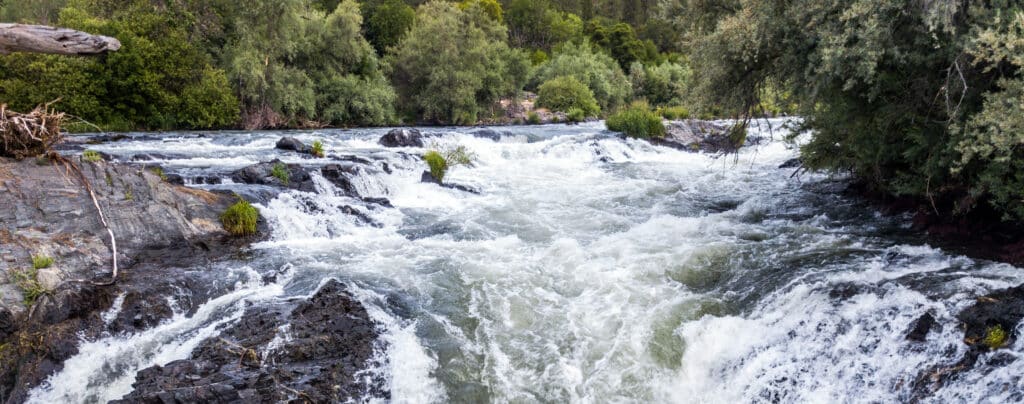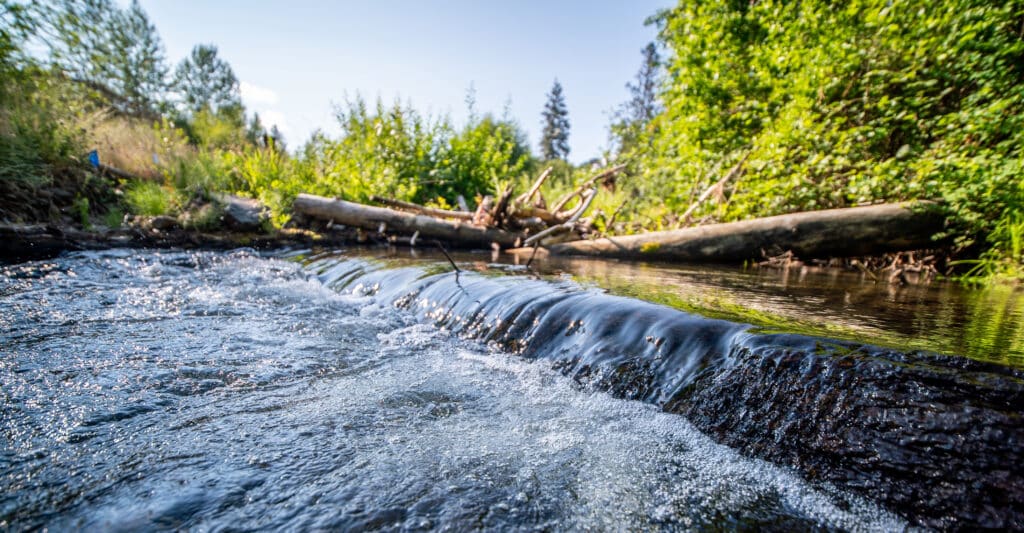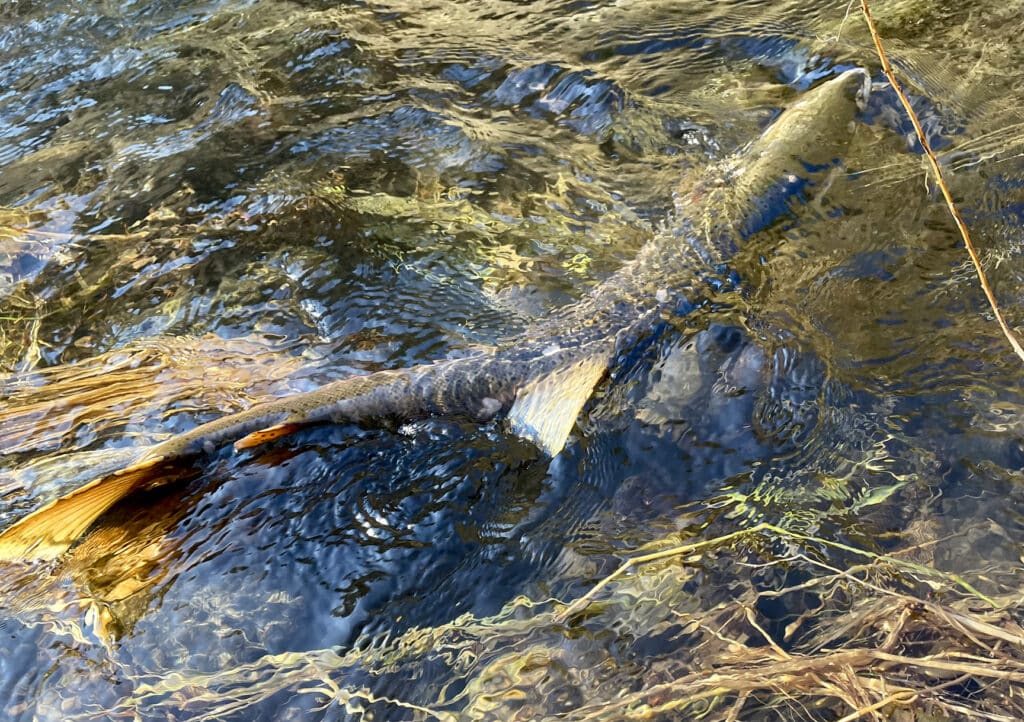TFT Completes Restoration of Stream Sites in Rogue Basin for Improved Salmon Habitat
February 7, 2023
Partnering with the Bureau of Reclamation, The Freshwater Trust has implemented 15 projects and installed nearly 350 large wood structures to restore fish habitat in Oregon’s Rogue River basin.
The 215-mile Rogue River flows through Southwestern Oregon from the Cascade Mountains to a dramatic terminus at the Pacific Ocean. Renowned runs of salmon and steelhead course through this Wild & Scenic River alongside whitewater rafting. Yet a combination of rapid population growth, rampant invasive species, erosion, and the loss of streamside forests have taken their toll. An increasingly dry and unpredictable climate promises to continue intensifying these challenges.

After a decade-long partnership with Reclamation, The Freshwater Trust has successfully implemented 15 habitat projects designed to meet Reclamation’s obligations to offset coho salmon habitat loss. In 2012, the National Marine Fisheries Service issued a Biological Opinion containing requirements for Reclamation to mitigate for its water storage and delivery projects in the Rogue basin to benefit coho. Biological Opinions analyze the impacts of a federal action on a listed species or critical habitat.
“These are exciting milestones for habitat enhancement that are already showing positive benefits,” said Meg Belais, Northwest Programs Director for The Freshwater Trust.
“Setting a target and working toward achievable outcomes is something we want for all rivers.”
Large wood structures were constructed in five reaches of the Bear Creek and Little Butte Creek basins to increase the complexity of instream habitat. This contributes to Reclamation’s goal of restoring 90% of the system’s historic weighted usable area (WUA), a metric for measuring suitable spawning and rearing habitat for fish. Eighteen acres of native trees and shrubs were planted within the Bear Creek watershed. Additional actions include reconnecting stream side channels, excluding livestock from the sensitive streambank areas with fencing, and improving fish passage to enhance access to upstream habitat.
The projects add habitat for the river’s salmon runs, improve water quality, and create resilience for the basin at large.

For example, one habitat project was implemented in 2016 on private ranch land along South Fork Little Butte Creek, a tributary of the Little Butte. Along both banks of the creek, TFT planted acres of native trees and shrubs, including black cottonwood, white alder, dusky willow, mock orange, and snowberry. By 2023, the plantings were well established and are forming a shade canopy over the creek. Habitat created by the plants has encouraged pollinators, deer, beaver, crayfish, and bald eagles to use the space.
In the creek, TFT and partners carefully built secure large wood structures that are providing critical habitat for rearing salmon in locations where they would occur under natural conditions. The large wood pieces are locally sourced, naturally damaged logs and trees. By 2023, the wood structures have remained stable under high flows and created scour pools. Surveys reveal juvenile coho salmon, returning adult Chinook salmon, river otter, and beaver using the structures.

By the Numbers: South Fork Little Butte
- 5,250 native trees and shrubs planted along 2.8 acres of streambanks
- 169 key pieces of large wood
- 54 large wood jams
- 0.6 miles of restored off-channel habitat
- 473 functional linear feet of stream restored
- 6,100 square feet of WUA habitat created
TFT’s 15 large wood projects created 52,225 square feet of WUA, which exceeded the Biological Opinion requirement of 30,800 across five reaches. In all, TFT helped Reclamation achieve approximately one-third of its total WUA commitment in the Rogue basin.
The Freshwater Trust will monitor and steward these 15 projects until 2027 to ensure that their benefits, including clean water and increased fish returns, persist.
“A critical aspect of conservation is spending the time and dollars to make sure these habitat benefits remain in place long term,” said Mark McCollister, Habitat Restoration Director for The Freshwater Trust.
“Long-term, collaborative efforts with federal partners open doors to tangible, on-the-ground improvements for local watersheds.”
#Bureau of Reclamation #large wood #Little Butte Creek #Oregon #riparian restoration #Rogue River
